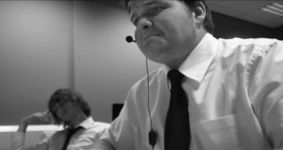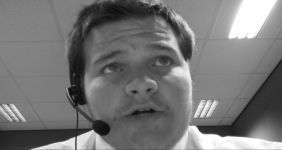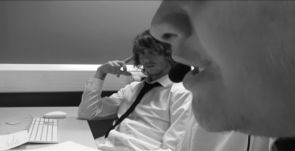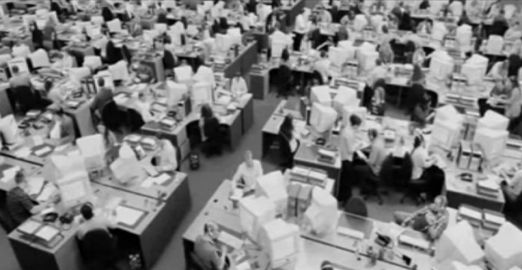
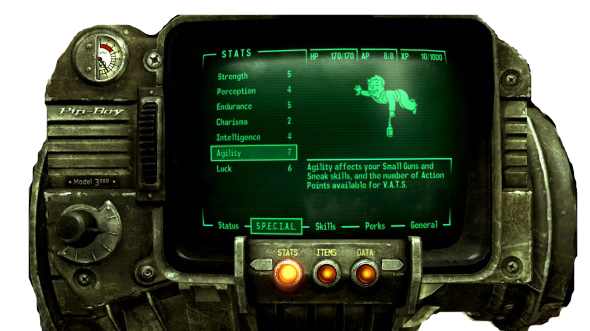


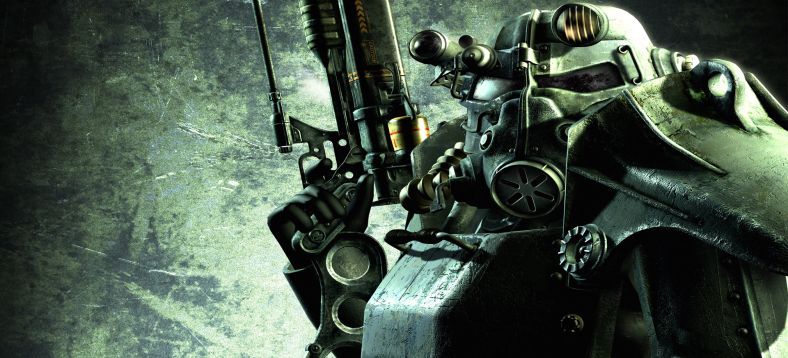

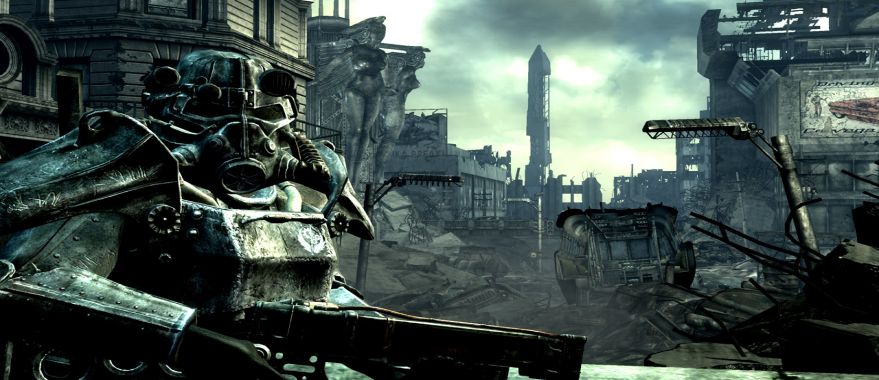

Man on Wire Critique
Man on Wire is a mainstream British documentary made in 2008, it chronicles a french high-wire artist's (Philippe Petit) high-wire walk between the twin towers in New York City in 1974. The film's main premise is the build up and preperation Philippe Petit and his crew went through in order to make this high-wire walk possible. The film is crafted like a heist film, presenting rare footage and still photographs of the walk, alongside reenactments with Paul McGill as the young Petit, and present-day interviews with the participants.
The film's producer Simon Chinn first encountered Philippe Petit in April 2005 on BBC Radio 4's "Desert Island Discs", after which he decided to pursue him for the film rights to his book, "To Reach the Clouds". After months of discussion, Petit agreed, with the condition that he would play an active, collaborative part in the making of the film. In an interview conducted during Man on Wire's run at the 2008 Tribeca Film Festival, director James Marsh explained that he was drawn to the story in part because it immediately struck him as a heist movie.
I enjoyed the film very much, I really engaged with Petit and his story. I think anyone can be drawn to this type of story because of it's nature; a man walking on a high-wire across building with no harness, it's very shocking and unbelievable, but when you get passed the enitial shock you see that there is a lot more behind the acts more emotionally than physically to Philippe. I loved the dramatization segments that accompany the crew interviews and Philippe's own archive footage, it gives it a lot more excitement and involves you in the story to the point where you feel like you're there with them. A good example of this is during a scene where Philippe is talking about a situation he and another crew member were involved in; they were forced to hide from a security guard from underneath a blanket, as I was watching this I was literally holding my breath during this portrayel in the dramatization.
The film for me was not just entertaining but very emotional, hearing this extraordinary story being told by the people involved and how important and life changing it was is truely amazing.
Grizzly Man Critique
Grizzly Man is a mainstream documentary made in 2005 about the life and death of grizzly bear enthusiast Timothy Treadwell. The film chronicles Treadwell's life and lead up to he and his girlfriend's tragic deaths at the hands of a ruthless grizzly bear, the feature consists of Treadwell's own footage of his interactions with grizzly bears as he camps out in the wild with them. It also features interviews with Treadwell's close friends and family as well as bear and nature experts.
The film was written, directed and narrated by German Filmmaker Werner Herzog. Timothy Treadwell spent 13 summers in Katmai National Park and Preserve, Alaska. Over time, he believed the bears trusted him and would allow him to approach them; sometimes he would even touch them. Treadwell was repeatedly warned by park officials that his interaction with the bears was unsafe to both him and to the bears. Treadwell filmed his exploits, and used the films to raise public awareness of the problems faced by bears in North America. In 2003, at the end of his 13th visit, he and his girlfriend Amie Huguenard were attacked, killed, and partially eaten by a bear; the events which led to the attack are unknown.
I really like this film. I love the way it is structured and how it doesn't rely too heavily on interviews and narration, but instead lets Treadwell's footage speak for itself, very few documentaries succeed in doing this and I think it worked amazingly well. The film opens with Treadwell's footage a few hours before his death, with the date of his death underneath, this automatically encapsulated me and I was very eager to find out what happened. The way Treadwell's footage is filmed, makes you feel like you are there on the exhibitions with him, as he talks directly into the camera.
I think Timothy Treadwell's story is so misunderstood, as many believe he had a death wish and he was just stupid to interact with bears the way that he did, but he came along to me as very passionate and caring, but in the end paid the ultimate price.
Bowling for Columbine Critique
Bowling for Columbine is a documentary film produced, written, directed and narrated by Michael Moore made in 2002. The film explores what Michael Moore suggests are the causes for the Columbine High School massacre and other acts of violence with guns. Moore focuses on the background and environment in which the massacre took place and some common public opinions and assumptions about related issues. The film looks into the nature of violence in the United States. In Moore's discussions with various people; including South Park co-creator Matt Stone, the National Rifle Association then-president Charlton Heston, and musician Marylin Manson, he seeks to explain why the Columbine massacre occurred and why the United States has a high violent crime rate, especially crimes involving guns.
I absolutley loved this documentary, I thought it was very interesting and it really engaged me and made me think about the subjects discussed throughout in a much different way. It exposes the shocking and very real crime related problem that America is responsible for.
I really like the way the film is structured, it follows Michael Moore's journey to talk to victims, celebrities and other people associated with the events and discover and make the world aware of these issues.
All in all, very good film, one of my favourite documentaries, mind-blowing and encapsulating.
The Filth and the Fury Critique
The Filth and the Fury is a rockumentary about the history of the British punk band The Sex Pistols made in 2000. This documentary charts the rise, decline and fall of the Sex Pistols from their humble beginnings in London's Shepherd's Bush to their disintegration at the Winterland Ballroom in San Francisco. Director Julien Temple puts the band into historical context with Britain's social situation in the 1970s through archival footage from the period. This film was seen in some ways as an opportunity for the Pistols to tell their side of the story, mostly through interviews with the surviving members of the group, footage shot during the era, and outtakes from "The Great Rock and Roll Swindle"; Julien Temple's first film he made about The Sex Pistols in 1980.
I didn't really connect to the story as much as I would've liked to, after a while I began to lose interest. Although I did appreciate the way it was structured, like Grizzly Man, it uses a lot of archive footage, more so than anything else which helps you engage with the story and not have to envision a lot of it for yourself which I liked.
Although I didn't really enjoy this documentary as much as I thought I would, I think it is still a very well made film.



The Collision
The Kuleshov Effect:
The Kuleshov Effect is a film editing montage effect demonstrated by Russian filmmaker Lev Kuleshov in the 1910s and 1920s. Kuleshov edited together a short film in which a shot of the expressionless face of Tsarist matinee idol Ivan Mozzhukhin was alternated with various other shots (a plate of soup, a girl, and a little girl's coffin). The film was shown to an audience who believed that the expression on Mozzhukhin's face was different each time he appeared, depending on whether he was "looking at" the plate of soup, the girl, or the coffin, showing an expression of hunger, desire or grief respectively. Actually the footage of Mozzhukhin was the same shot repeated over and over again. Vsevolod Pudovkin (who later claimed to have been the co-creator of the experiment) described in 1929 how the audience "raved about the acting.... the heavy pensiveness of his mood over the forgotten soup, were touched and moved by the deep sorrow with which he looked on the dead child, and noted the lust with which he observed the woman. But we knew that in all three cases the face was exactly the same." Kuleshov used the experiment to indicate the usefulness and effectiveness of film editing. The implication is that viewers brought their own emotional reactions to this sequence of images, and then moreover attributed those reactions to the actor, investing his impassive face with their own feelings.
For this task I teamed up with Grant Lang, we both were on the same page about using the same concept of the story from Kuleshov’s film. We decided on making a multiple meaning piece, using a person (ADEN) staring motionless at a pay phone. We liked this idea because it leaves it up to the viewer to decide what it is about. After we screened it to the class we asked a few people what they thought it was about and got the exact feedback we wanted. Lots of different opinions and ideas were brought forward, for example; was it a man building up the courage to make a call to someone important to him? Was it a man waiting anxiously for a phone call that could change his life?
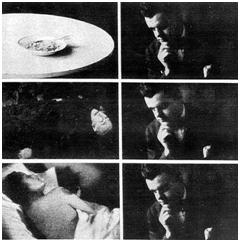

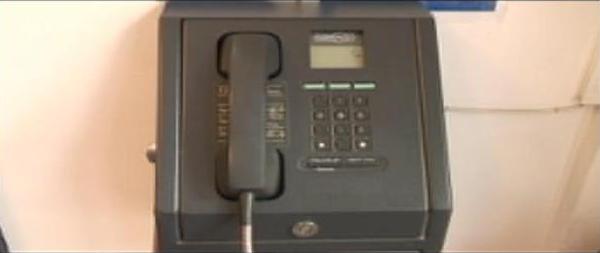
Split-Screen
For the split-screen project we had to get into groups of three and produce a one-minute long film that forms a conversation/exploration on/of one of the following themes:
“My pet hate” – AKA Grumpy old men
“They don’t make them like they used to...” – Musical tastes?
“The world is big and scary” – What troubles you?
“The greatest day of my life”
“Diary entry”
“What will it be like in ten years time?”
Each member of our groups had to be responsible for the content of their segment of the film, giving each of us freedom to share our opinions. I grouped with Grant Lang and Tash Magor and we quickly decided on the musical taste subject, we knew we each had very strong opinions on music and that it would be a perfect opportunity to express them.
We decided to do a standard split-screen technique using three boxes, each with are filmed segments in them. During the filming process, we wrote down our own dialogue and decided how to structure them all together to create the look of us arguing. As we each filmed our segments in the exact same spot, we had to cue spots for us to stop talking and listen to the other person talking and react to it which was a fun challenge. We also used comedic techniques interacting with the other person video clips, such as Tash screws up a piece of paper and throws into my video and it hits me in the head in perfect sync. I really enjoyed this exercise as it was quite challenging and required a lot of communication, team work and planning.
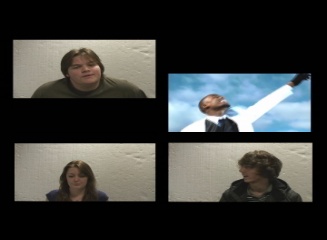

THREE THINGS THAT HAVE HAD A POSITIVE EFFECT ON ME:
The Story telling techniques used in “Grizzly Man”: The heavy use of real archive footage from Timothy Treadwell’s expeditions. The “Bowling for Columbine” documentary as a whole for me was very interesting and encapsulating, it raises many questions and has you think about the issues discussed which I think is good. I was also impressed with the way “Loose Change” was made, using only archive footage with a commentary over it.
DOCUFICTION?
Docufiction is a cinematographic combination of fiction and documentary. I want to create my own fictional historical event that takes place in England and tell the story using the documentary format.
Inspiration
I watched “Signs” by M. Night Shyamalan and was instantly hit by it’s powerful story.
The film is centred around a family living on a large farm in Pennsylvania who wake up one morning to find large crop circles in their field. The interesting thing about this film is that it doesn’t focus completely on just the alien invasion like typical Hollywood blockbusters (Independence Day), but the journey the main character, (Mel Gibson) the towns reverend goes through as the ordeal tests his faith as he journeys to find out the truth about the crop circles.
THE AFTER EFFECT
After viewing this film the first thing I thought was; “What if this happened to us?”
This immediately inspired me to use a story similar to this and base it around Plymouth, using the standard techniques used in documentaries such as; witness interviews, archive footage etc. But of course it will be fictional, using myself, family and friends to act and help me with interviews and so on.
Idea
I want to do a story about a 24 hour period of mysterious lights and crafts flying in the skies of the South West and tell the stories of the people involved and affected by the event.
TARGETAUDIENCE
The audience I am targeting towards is young teenagers to adults.
I think this type of documentary will interest a vast audience as people enjoy learning about tragic events that have happened or that could happen.
In preparation for this documentary I have read many UFO sighting stories, eye-witness accounts and news reports. I also watched a UFO documentary called “Out of the Blue” which has given me some great ideas of how to structure the content in my documentary.
RESEARCH
As my documentary is a docufiction, interviews and other content had to be planned and scripted before hand, this helped out a lot with the time schedule as I didn't have to find people who would be willing to be interviewed on camera or have to worry about release forms.
I began planning the interviews first, as I wanted my documentary to open with a disclaimer message and facts about UFO sightings, followed by important lines from the interviews I film to give the viewer a taste of what the documentary. I wanted to use this technique to draw the audience in right from the start and leave them wanting more. Here is a few screenshots of the opening sequence:
I really like the shot just before the opening title of Perry's line; "I am absolutley sure that we are not alone in this universe..." I filmed it as a close up shot to give it a more dramatic feel.

A production using the single-camera setup generally employs just one camera. Each of the various shots and camera angles is taken using the same camera, which is moved and reset to get each shot or new angle. The lighting setup is typically reconfigured for each camera setup.
In single-camera, if a scene cuts back and forth between actor A and actor B, the director will first point the camera towards A and shoot shots number 1, 3, 5, 7, and so on. Then they will point the camera toward B and do shots number 2, 4, 6, 8, and so on. In the post-production editing process, the shots will be assembled into their final order. In contrast, multiple-camera shooting would record a variety of angles of actors A and B simultaneously; the director would then have the choice of switching among the angles while the program is being recorded (or broadcast) or recording all shots and cutting them together in post-production. Further, single-camera productions tend to cluster the shooting of all the scenes that utilize a certain set and cast, while most multiple-camera productions are shot "in sequence"—the shooting progressing sequentially through the script.
The single-camera setup gives the director more control over each shot, but is more time consuming and expensive than multiple-camera. The choice of single-camera or multiple-camera setups is made separately from the choice of film or video (that is, either setup can be shot in either film or video). However, multiple-camera setups shot on video can be switched "live to tape" during the performance, while setups shot on film still require that the various camera angles be edited together later.

Submarine is a 2010 coming-of-age comedy-drama film adapted from the 2008 novel of the same name by Joe Dunthorne. The film is directed by Richard Ayoade and stars Craig Roberts, Yasmin Paige, Sally Hawkins and Paddy Considine. The film is Ayoade's directorial debut.
15-year-old Oliver Tate has two objectives: To lose his virginity before his next birthday, and to extinguish the flame between his mother and an ex-lover who has resurfaced in her life.
I really enjoyed Submarine, the story was very simple but compelling. I found the characters very likeable and I could relate to Oliver and what he was going through as a young teenager.
The film is very well constructed with interesting shots and angles. It has a Super 8 grainy sort of look to the film which I thought was cool. The soundtrack was awesome, Alex Turner from the Arctic Monkeys wrote 6 tracks especially for the film.


For "The Waiting Room" Task we were asked to get into small groups and create a single camera production which explores issues of time, atmosphere and character development.
In preperation for this task we screen a scene from Martin Scorsese's "Raging Bull" starring Robert De Niro, in this scene it invovles a boxing fight, and during the fight, all sound is drowned out and all you can hear is the fighters, time is slowed down and every fighting sound is amplified. This effect worked really well and it felt like you were watching them fight for a lot longer than you actually were.
For this task we were given an example production, and told to create our own version of the scenario.
"In a room, an individual stares into nothingness. Theroom contains a variety of objects that somehow relate to that person. In one minute from now the life of that individual will change forever. But that minute feels like an eternity. The room becomes a prison. The clock becomes a ticking time bomb. Sounds are amplified. Further unsettling noises build up. The tension increases as that moment draws ever nearer until..." CUT TO BLACK
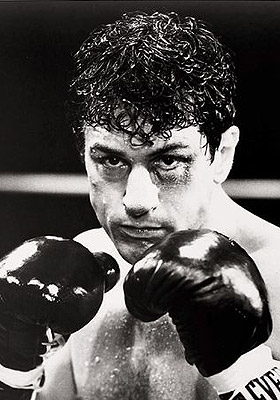
For this project I grouped up with Grant Lang, Josh Dingle and Josh Carter. We decided to do a hospital waiting room scene which eventually ended up changing to a sexual health clinic. The idea we had was to follow a very worried guy's journey through his process of waiting to be called up for his test. We decided to make it comical so we could have more freedom and be more silly with the situations he gets into. For the scene involving Josh Dingle's character was that his music he was listening to in his headfones was amplified and my character (main role) was the only one who could hear it this loud. I am not happy with this scene in the final edit as I didn't get the effect I orignally wanted.
For the flashback sequence we showed very little, this leaves the audience to use their imaginations. Up until this point the audience doesn't know where he is or why he's nervous, the comical scene when he finds the leaflet; that is complete confirmation on where he is and why he is there, I choose to do this to keep the audience wondering and keep them interested. We filmed it handheld and still using a tripod. We decided to use both techniques to give the film more movement on the interesting sequences. The sequence I like the most is the clock ticking backwards, I think this utilizes the time slowing effect very well, and just as it gets unbearable and almost frustating, the clock starts going backwards which plays with the audience's minds.

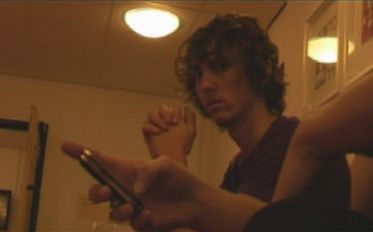
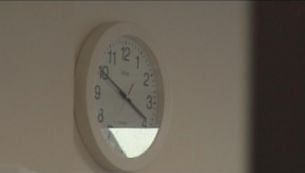
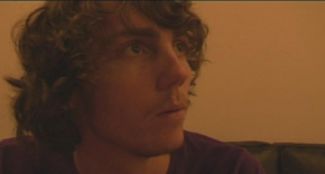


For "The Coffee Cup" production we were given a scenario, the scenario being; the film must be black and white. It must involve two people sat together (at a table, on the grass, etc.) They are together through a shared everyday experience (sharing a coffee, playing a game, watching the world or people, writing letters to each other, reading a book etc.) During the course of the scene (approximately 5 minutes) the audience are invited to witness their behaviour and interactions within the everyday situation. We had to start our film with a title caption given to us from a random quote generator on the internet or a line from a song followed by an extreme long shot. The title had to be white on black, Times New Roman, centred. We then had to end our film with an extreme long shot and cut to black for 3 seconds with no credits. Following these guidelines was critical as the whole class would join each others films together, some groups chose to create an animation introduction to the scene following theirs.
For this project I grouped with Grant Lang with help from Josh Carter and Josh Dingle with the filming. As Grant and I are both fans of The Office we decided to do a film about two mates working in a call centre together and to observe their everyday ventures. This was our first production that required lots of dialogue which meant that we needed a script to follow mainly as guidelines as most of our lines were improvised.
We began storyboarding the opening sequence and really got a feel for what we wanted in this film.
The single camera technique was very useful and gave us lots of freedom to expand the scene with a wide variety of shots.
For the opening extreme long shot we used a short clip from a call centre sketch production starring Simon Pegg and David Schwimmer as we needed to create the feeling that we were actually working in a very busy call centre.
To help the call centre environment we added a stock office wildtrack found on the internet, with phones ringing and people chatting.
As Connor Monaghan was animating the scene after our production to introduce the next, we had to close the film with a shot of a coffee cup as he began animating a coffee cup before production commenced.

